new mexico has some interesting plants, many i've never seen before or only heard about. one surprising thing is the number of prickly-pear cacti one will find growing just about anywhere at certain elevations. also creosote bush is very common. most of these pictures were taken with my small digital camera, and it was clearly overwhelmed by the bright sunlight and the desert colors.
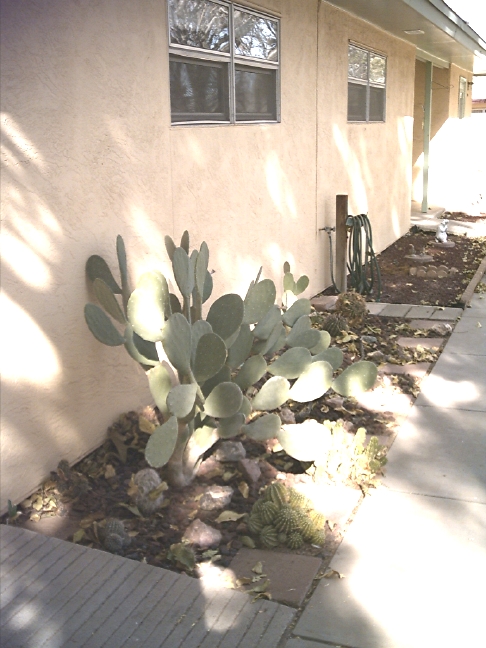
at the adult living community where my mother/stepfather live, a
neighbor's 'garden' of native or desert succulents
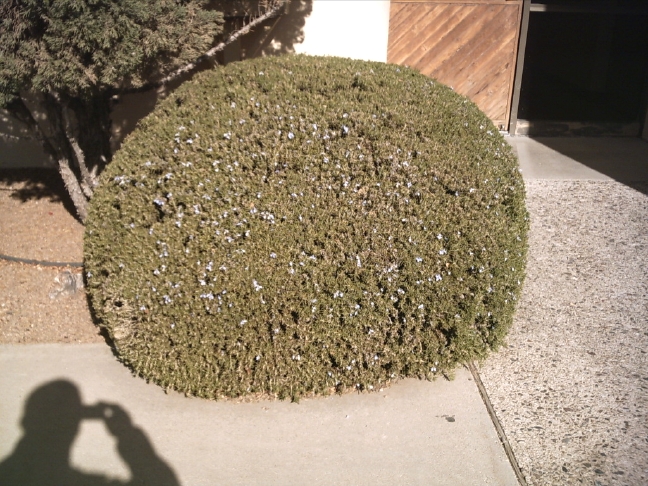
across the street from the main entrance to the community
is a methodist church which has a xeric garden which has
many plants native to new mexico, including others that
require minimal irrigation. this plant believe it or not
is a pruned rosemary bush! don't know if it is the same rosemary
that we eat or a different variety; if you know, feel free to post.
it has the blue flowers that I have seen on some rosemary bushes
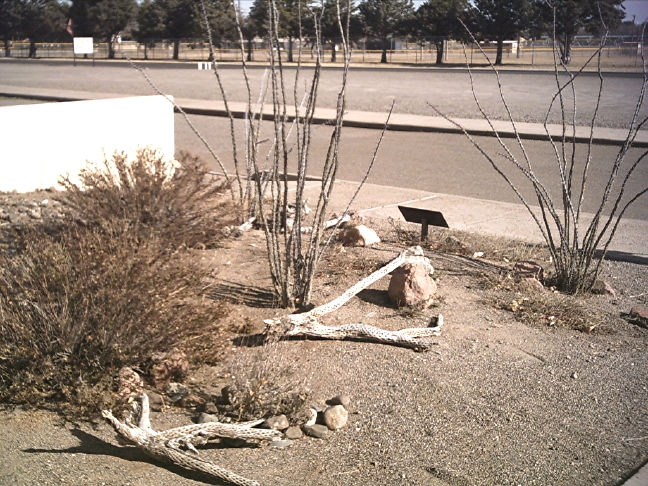
around the corner there are some dead limbs of chollo
(hollow and with holes in the stem) and what I originally
thought were manzanitabush (the thing that looks like a
dead rose bush) but are called ocotillo. I was told
that the ocotillo can be a good indicator
for groundwater. it will look like this unless there is water
underneath the plant, in which case it will be flowering

not sure what some of these are other than ocotillo and
prickly pear cactus further away
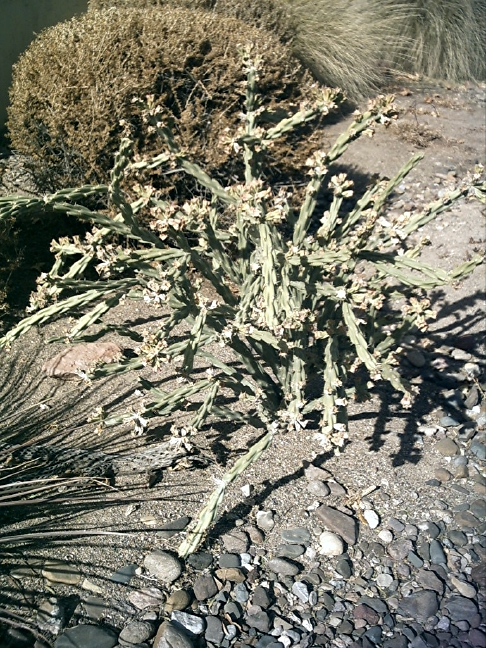
one of the native plants in church garden
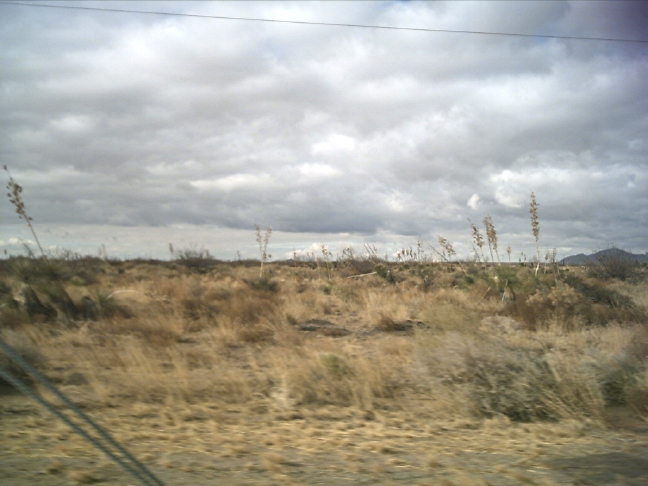
these plants can be found growing in many locations around the southeast, even higher elevations. (not a very good image) yucca plants were prized by the pueblo and other indian tribes for many reasons; they have beautiful flowers, the fruit can be eaten, the flower stems once dried are fairly hollow but harden like wood and can be used for canes and other things. the leaves were chewed to remove the green material and were used for shoes, baskets and quite a lot more. I have a better image of a single yucca later on
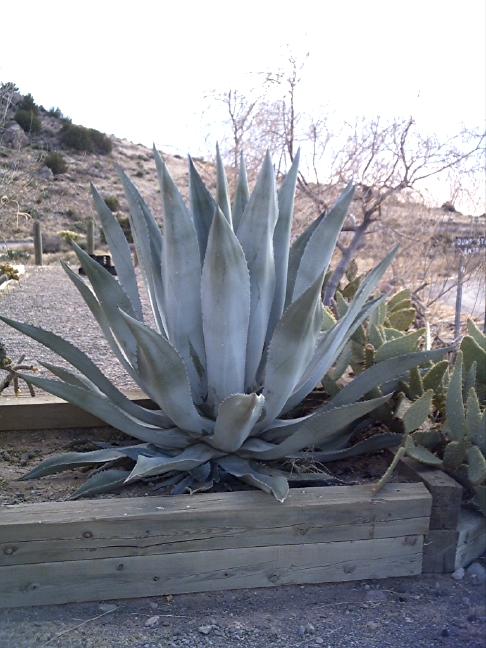
at the rockhound state park there are 'planters' that contain native plants.
this plant is called a 'century plant' since it grows for 80-100 years and then flowers. after it sets seed, the plant will die
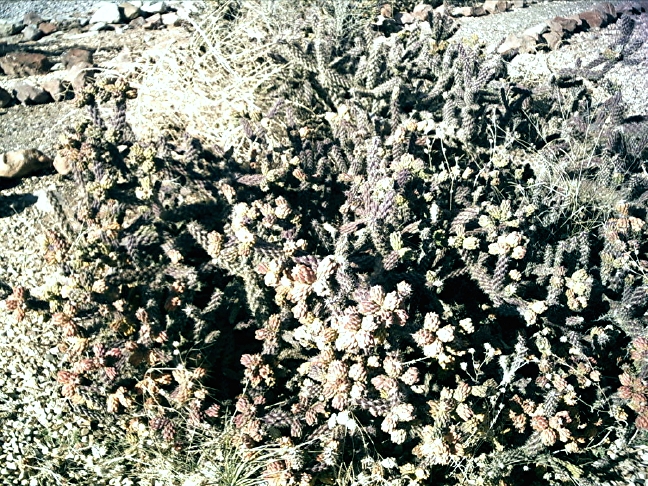
a few versions of this are found in native gardens, don't remember the name
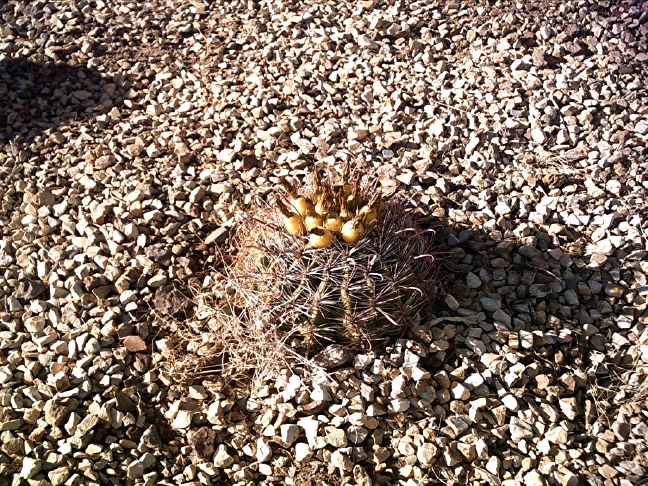
a baby barrel cactus
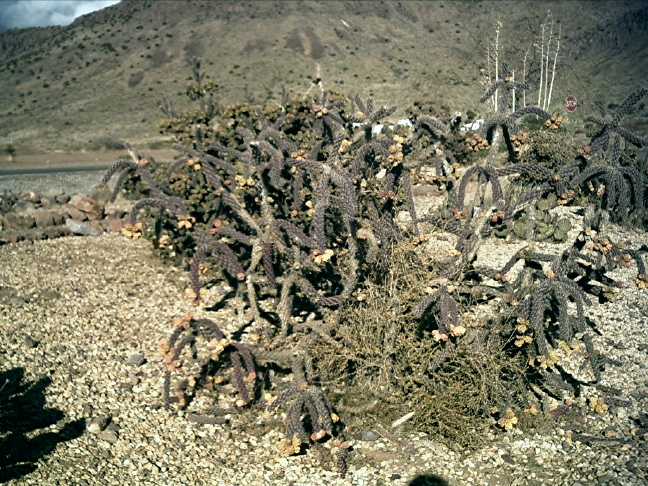
maybe chollo? varieties of this can grow to great size in different areas including
higher elevations
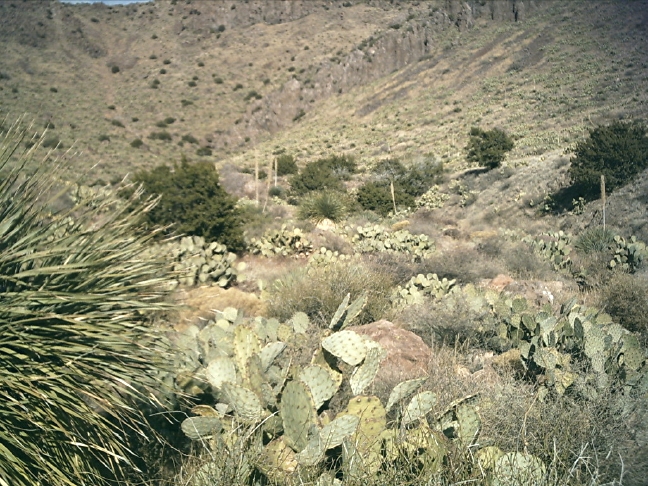
when we were approaching the mountains of rockhound state park (and others)
I noticed that some hills had greenery on them. I thought it nice that at least some bushes
lived on these mountains, but when we went higher in the park, I noticed that all of the green
was from scores of prickly-pear cacti! these cacti can defend themselves quite well; there
is a longer, stiff spine which can give you a good jab if you get a little too close. if you don't
desist, there are finer, threadlike spines which have a hooked barb so that if they get in your
skin, it is very difficult to get them out
believe it or not, I was told that areas where cattle graze, there are no prickly-pear
cactus, and that the cows eat them like candy I can't imagine trying to eat one of those
I can't imagine trying to eat one of those
things without extensively charring or boiling them to remove the outer layer (and thorns)
but the cows must have either very tough mouths or no pain receptors in them!
prickly pear leaves are used for salsa and other things and are quite tasty, but only after the
outer layer and thorns are removed, of course

at the adult living community where my mother/stepfather live, a
neighbor's 'garden' of native or desert succulents

across the street from the main entrance to the community
is a methodist church which has a xeric garden which has
many plants native to new mexico, including others that
require minimal irrigation. this plant believe it or not
is a pruned rosemary bush! don't know if it is the same rosemary
that we eat or a different variety; if you know, feel free to post.
it has the blue flowers that I have seen on some rosemary bushes

around the corner there are some dead limbs of chollo
(hollow and with holes in the stem) and what I originally
thought were manzanitabush (the thing that looks like a
dead rose bush) but are called ocotillo. I was told
that the ocotillo can be a good indicator
for groundwater. it will look like this unless there is water
underneath the plant, in which case it will be flowering

not sure what some of these are other than ocotillo and
prickly pear cactus further away

one of the native plants in church garden

these plants can be found growing in many locations around the southeast, even higher elevations. (not a very good image) yucca plants were prized by the pueblo and other indian tribes for many reasons; they have beautiful flowers, the fruit can be eaten, the flower stems once dried are fairly hollow but harden like wood and can be used for canes and other things. the leaves were chewed to remove the green material and were used for shoes, baskets and quite a lot more. I have a better image of a single yucca later on

at the rockhound state park there are 'planters' that contain native plants.
this plant is called a 'century plant' since it grows for 80-100 years and then flowers. after it sets seed, the plant will die

a few versions of this are found in native gardens, don't remember the name

a baby barrel cactus

maybe chollo? varieties of this can grow to great size in different areas including
higher elevations

when we were approaching the mountains of rockhound state park (and others)
I noticed that some hills had greenery on them. I thought it nice that at least some bushes
lived on these mountains, but when we went higher in the park, I noticed that all of the green
was from scores of prickly-pear cacti! these cacti can defend themselves quite well; there
is a longer, stiff spine which can give you a good jab if you get a little too close. if you don't
desist, there are finer, threadlike spines which have a hooked barb so that if they get in your
skin, it is very difficult to get them out
believe it or not, I was told that areas where cattle graze, there are no prickly-pear
cactus, and that the cows eat them like candy
things without extensively charring or boiling them to remove the outer layer (and thorns)
but the cows must have either very tough mouths or no pain receptors in them!
prickly pear leaves are used for salsa and other things and are quite tasty, but only after the
outer layer and thorns are removed, of course
Last edited:













































